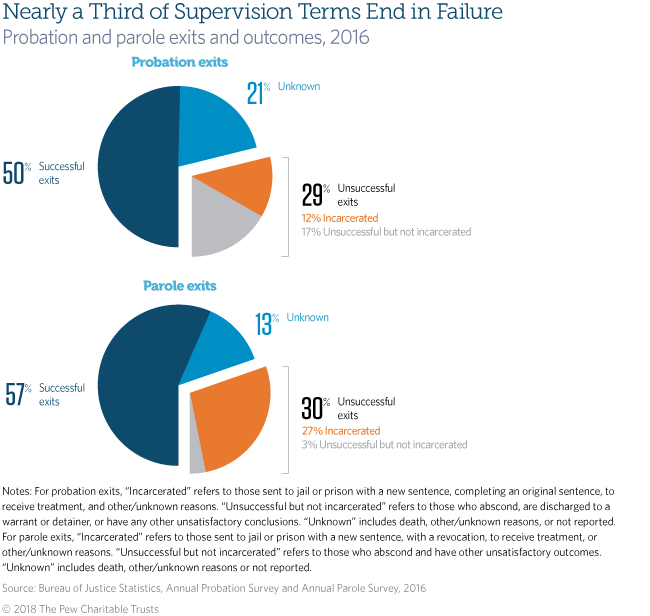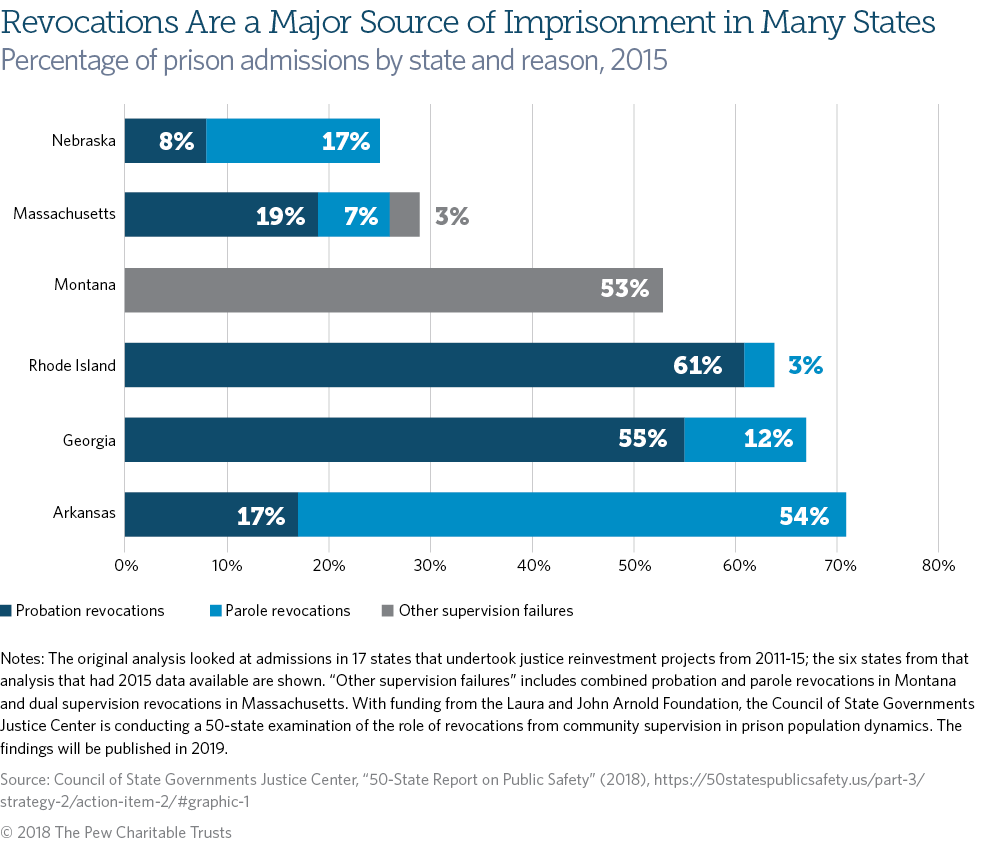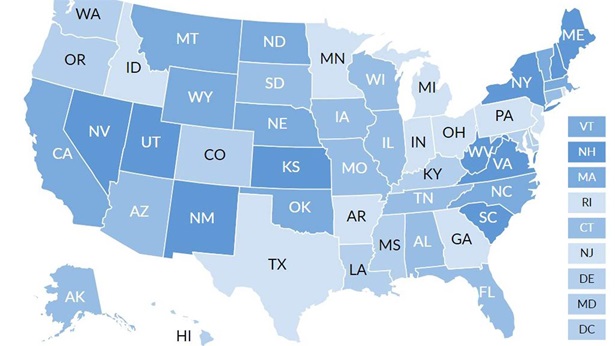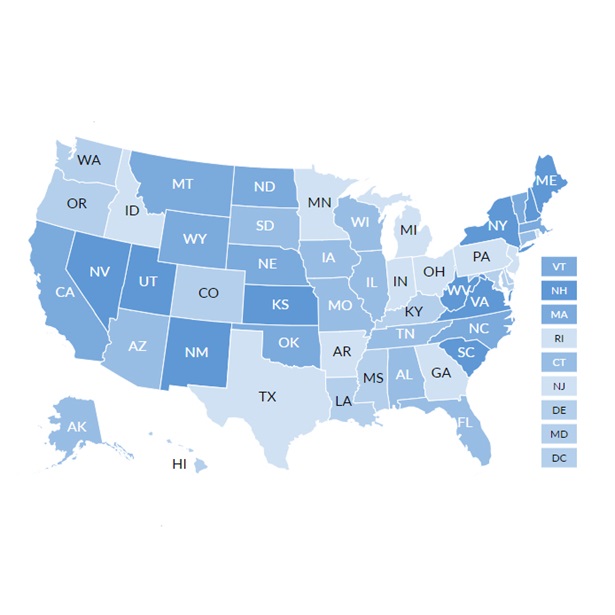Community Supervision a Leading Driver of Incarceration
Nearly 350,000 probationers and parolees are sent to jail or prison annually
About half of people who complete probation or parole terms do so successfully. But for nearly a third, supervision ends in failure and too often leads to jail or prison. In 2016, 29 percent of the almost 2 million probation exits and 30 percent of roughly 425,000 parole exits were unsuccessful, with 12 percent and 27 percent, respectively, resulting in incarceration. All told, nearly 350,000 individuals on supervision were sent to a jail or prison in 2016.
Although 50-state data are not available, research has found that probation and parole revocations—i.e., when individuals are sent to jail or prison for violating the terms of their supervision or for a new crime—contributed significantly to prison admissions in several states in 2015. Probation revocations made up 55 percent of all prison admissions in Georgia and 61 percent in Rhode Island, while those from parole accounted for 54 percent of all prison admissions in Arkansas. Proportions were significantly lower in some states, such as Massachusetts, where revocations accounted for just 19 and 7 percent of admissions, respectively, and Nebraska, where those figures were 8 and 17 percent.
All told across these six states, no fewer than 1 in 4 prison admissions and, at the other end of the spectrum, more than 7 in 10 admissions resulted from revocations of community supervision. As one recent study concluded, “the largest alternative to incarceration in the United States is simultaneously one of the most significant drivers.”
The immense growth and scale of probation and parole and stubbornly high failure rates that account for a substantial share of prison admissions highlight the need for a new approach to community supervision that shifts the purpose from punishing failure to promoting success.
Jake Horowitz is the director, Connie Utada is an associate manager, and Monica Fuhrmann is a senior associate with The Pew Charitable Trusts’ public safety performance project.















